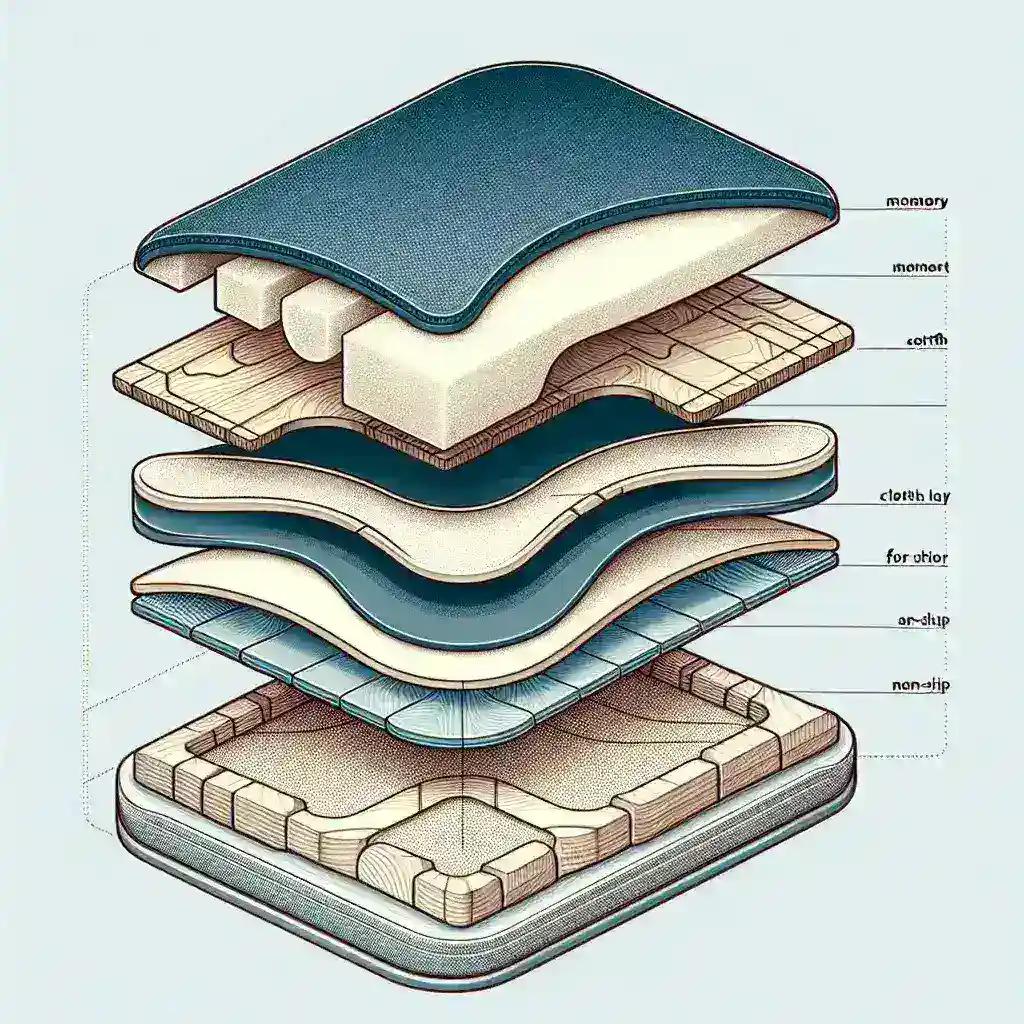What Materials Are Used in Ergonomic Mouse Pad Wrist Rests?
In the digital age, prolonged computer usage has become a norm, leading to various health concerns related to posture and strain. One way to mitigate these issues is by using ergonomic accessories, such as mouse pads with wrist rests. An ergonomic mouse pad wrist rest aids in maintaining a natural wrist position, reducing the risk of repetitive strain injuries. But have you ever wondered what materials are used to create these ergonomic supports? In this article, we will explore the different materials, their properties, and why they are essential for comfort and function.
| Material | Properties | Advantages | Disadvantages |
|---|---|---|---|
| Memory Foam | Soft, conforms to wrist shape, provides pressure relief | Excellent support, reduces pressure points | Can retain heat, may wear over time |
| Gel | Cool, flexible, often used in combination with other materials | Provides cushioning and cooling effect | May lose shape over time, can feel sticky |
| Latex | Elastic, durable, resilient | Offers firm support and longevity | May not conform to wrist shape well, potential allergies |
| Silicone | Flexible, non-slip, durable | Stays in place, easy to clean | Not as cushioned as other materials |
| Fabric/Cover | Variety of textures, breathable | Varied aesthetic options, reduces moisture buildup | Can wear out easily, may require washing |
1. Memory Foam
Memory foam is a popular choice for ergonomic mouse pad wrist rests due to its unique ability to conform to the shape of the wrist. It distributes pressure evenly, reducing discomfort during long periods of use. This material is especially beneficial for those who experience wrist fatigue or pain.
Benefits of Memory Foam:
- Excellent cushioning properties
- Adapts to the user’s wrist shape for personalized support
- Highly effective at reducing pressure points
Drawbacks of Memory Foam:
- Can retain heat, leading to discomfort in warmer conditions
- May compress or wear out over time, losing its supportive qualities
2. Gel
Gel wrist rests are designed to provide a cool, cushioned surface for your wrist. The gel material is often encased in a fabric cover, adding a layer of comfort and aesthetic appeal. The flexible nature of gel allows it to conform to the wrist, while also providing sufficient support.
Benefits of Gel:
- Offers a cooling effect, ideal for long work sessions
- Provides adequate cushioning without losing support
Drawbacks of Gel:
- Can lose its shape after extended use
- Some gel materials may feel sticky or tacky
3. Latex
Latex wrist rests are known for their durability and resilience. This material offers firm support, which can benefit users who prefer a stable surface for their wrists. However, latex may not conform as well as memory foam or gel, making it less accommodating for some users.
Benefits of Latex:
- Long-lasting and resilient
- Offers stable support
Drawbacks of Latex:
- Less comfortable for those requiring softer padding
- Potential for allergic reactions in some individuals
4. Silicone
Silicone is a durable and flexible material that is often used in ergonomic mouse pad wrist rests. Its non-slip properties ensure that the pad stays in place during use. While silicone provides a firm support, it may not offer the same level of cushioning as gel or memory foam.
Benefits of Silicone:
- Non-slip surface keeps the pad secure
- Durable and easy to clean
Drawbacks of Silicone:
- Not as padded as other materials
- May not provide enough cushioning for prolonged use
5. Fabric/Cover
The outer cover of ergonomic mouse pad wrist rests is typically made from a variety of fabric materials. This cover plays a significant role in the overall comfort, moisture-wicking ability, and aesthetic look of the pad. Some common fabric types include polyester, cotton, and spandex.
Benefits of Fabric/Cover:
- Available in various textures and colors
- Allows for breathability, reducing moisture buildup
Drawbacks of Fabric/Cover:
- May wear out or fray over time
- Fabric may require regular washing for cleanliness
Conclusion
Choosing the right material for an ergonomic mouse pad wrist rest is crucial for maintaining comfort and preventing strain injuries during extended computer use. Each material comes with its unique set of properties, advantages, and disadvantages. When selecting the ideal wrist rest, personal preference plays a significant role, as does the specific requirements of your workspace.
Ultimately, understanding the materials used can help you make an informed decision that enhances your productivity and well-being, allowing you to work comfortably for hours on end.

